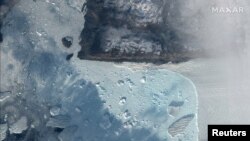The Arctic Ocean's floating ice cover shrank this year to its second-lowest extent since modern recording began nearly four decades ago, driven in part by the impact of a Siberian heat wave.
Editors' Picks
RFE/RL has been declared an "undesirable organization" by the Russian government.
If you are in Russia or the Russia-controlled parts of Ukraine and hold a Russian passport or are a stateless person residing permanently in Russia or the Russia-controlled parts of Ukraine, please note that you could face fines or imprisonment for sharing, liking, commenting on, or saving our content, or for contacting us.
To find out more, click here.
Top Trending Russia
1









